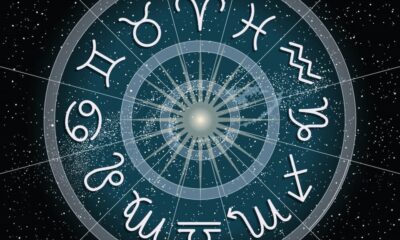Science
Astrophysicists Uncover Unique Supernova, Revealing Star’s Secrets

Astrophysicists have made a groundbreaking discovery with the detection of a supernova, designated SN2021yfj, embedded in a wind rich with silicon, sulfur, and argon. This finding suggests that the massive star lost its outer layers of hydrogen and helium prior to its explosive demise, providing direct evidence of the theorized inner shell structure of large stars.
The analysis of SN2021yfj reveals a distinctive chemical signature, differing from typical supernovae, which generally display strong signals of lighter elements like hydrogen and helium. Instead, the observations indicate that the star shed its outer layers, exposing the inner silicon and sulfur-rich layers just moments before the explosion. This discovery offers an unprecedented glimpse into the inner workings of a massive star just before its catastrophic end.
Massive stars, which weigh between 10 to 100 times more than our Sun, are powered by nuclear fusion. In this process, immense pressure and heat in the stellar core facilitate the fusion of lighter elements into heavier ones. As these stars evolve, they burn heavier elements in their cores, leading to the formation of an iron core. When the iron core collapses, it triggers a supernova or results in the formation of a black hole.
The supernova SN2021yfj has ejected an extraordinary amount of material, far exceeding previous observations of “stripped stars.” Typically, these stars lose outer hydrogen layers, revealing helium or carbon and oxygen underneath. However, SN2021yfj provides evidence of a deeper, more complex structure, suggesting that something unusual and violent occurred prior to the explosion.
New Insights from the Zwicky Transient Facility
The discovery was made using instruments at the Zwicky Transient Facility (ZTF), located east of San Diego. ZTF employs a wide-field camera to scan the entire visible night sky and has established itself as a leading discovery engine for astronomical transients, including supernovae. During its observations, the research team detected a star-forming region situated 2.2 billion light-years from Earth.
To further investigate this unique object, the team sought to obtain its spectrum, which dissects light into its component colors. Each color corresponds to a different element, allowing scientists to identify the elements present in the supernova. In contrast to the typical helium, carbon, nitrogen, and oxygen found in other stripped supernovae, the spectrum of SN2021yfj was dominated by strong signals of silicon, sulfur, and argon.
These heavier elements are produced through nuclear fusion within the star’s core during its final life stages. Although the precise cause of this phenomenon remains uncertain, the researchers are considering several scenarios, including interactions with a potential companion star, a massive pre-supernova eruption, or exceptionally strong stellar winds.
Publication and Future Research
The findings of this remarkable study are published in the journal Nature under the title “Extremely stripped supernova reveals a silicon and sulfur formation site.” The research highlights the complexities surrounding massive stars and their explosive ends, opening new avenues for understanding stellar evolution.
Dr. Tim Sandle, Editor-at-Large for science news at Digital Journal, emphasizes the significance of this discovery. As a practicing microbiologist and author, Sandle’s insights underline the importance of continuous exploration in astrophysics. The study not only contributes to the existing body of knowledge regarding supernovae but also raises intriguing questions about the life cycles of massive stars.
This discovery is expected to inspire further research into the processes that govern the evolution of massive stars and their ultimate fate, shedding light on the intricate workings of the universe.
-

 Politics4 weeks ago
Politics4 weeks agoSecwepemc First Nation Seeks Aboriginal Title Over Kamloops Area
-

 World5 months ago
World5 months agoScientists Unearth Ancient Antarctic Ice to Unlock Climate Secrets
-

 Entertainment5 months ago
Entertainment5 months agoTrump and McCormick to Announce $70 Billion Energy Investments
-

 Science5 months ago
Science5 months agoFour Astronauts Return to Earth After International Space Station Mission
-

 Lifestyle5 months ago
Lifestyle5 months agoTransLink Launches Food Truck Program to Boost Revenue in Vancouver
-

 Technology3 months ago
Technology3 months agoApple Notes Enhances Functionality with Markdown Support in macOS 26
-

 Lifestyle3 months ago
Lifestyle3 months agoManitoba’s Burger Champion Shines Again Amid Dining Innovations
-

 Top Stories2 months ago
Top Stories2 months agoUrgent Update: Fatal Crash on Highway 99 Claims Life of Pitt Meadows Man
-

 Politics4 months ago
Politics4 months agoUkrainian Tennis Star Elina Svitolina Faces Death Threats Online
-

 Sports5 months ago
Sports5 months agoSearch Underway for Missing Hunter Amid Hokkaido Bear Emergency
-

 Politics5 months ago
Politics5 months agoCarney Engages First Nations Leaders at Development Law Summit
-

 Technology5 months ago
Technology5 months agoFrosthaven Launches Early Access on July 31, 2025



















